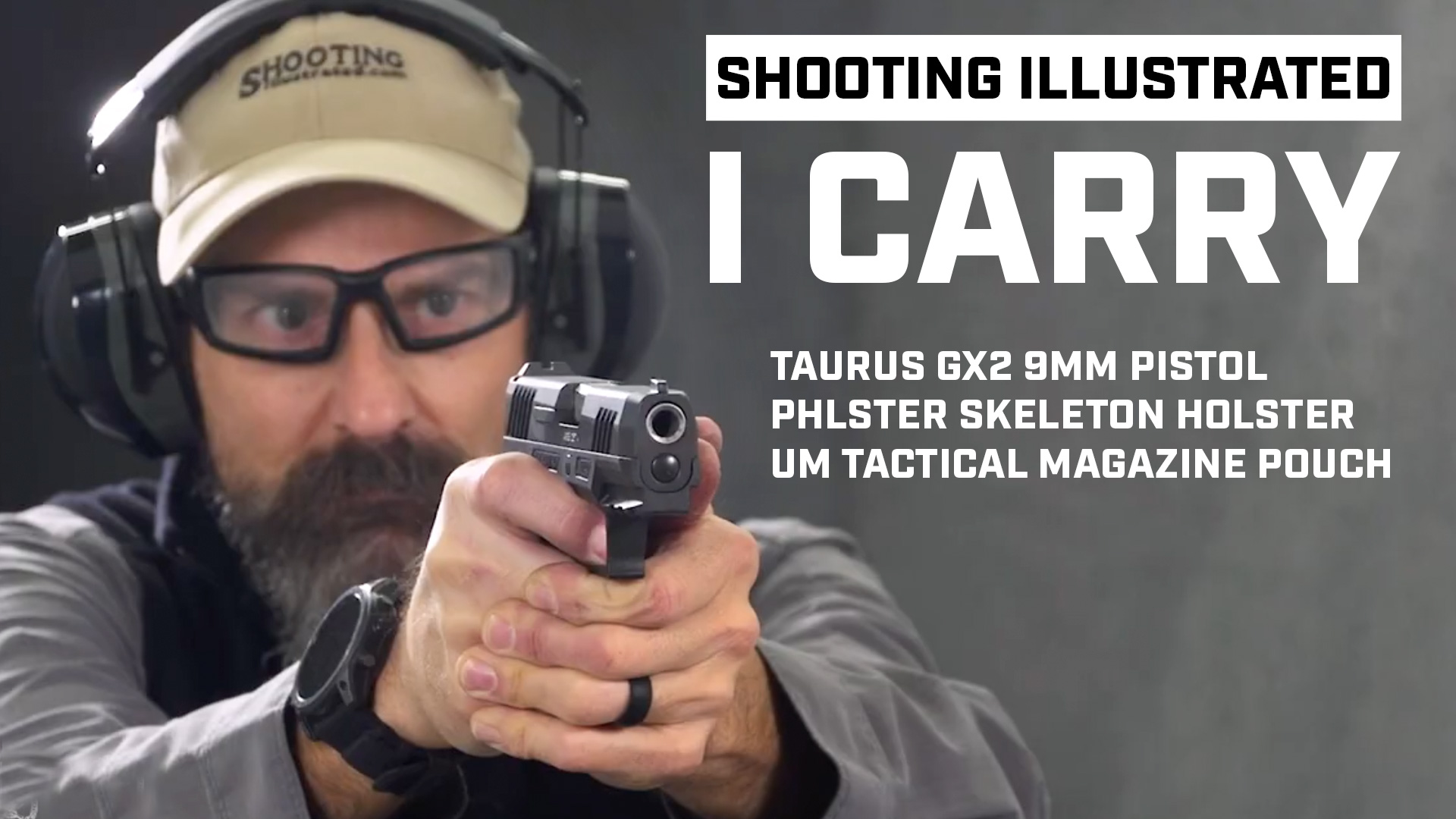Firearm: Taurus GX2 (MSRP: $309.99)
Taurus released its new GX2 9 mm pistol as an entry-level option, but it shouldn’t be viewed as just an inexpensive handgun. Think of it as the concealed-carry handgun boiled down to the essentials: striker-fired operation, 13-round magazine, workable sights, accessory rail and bladed-safety trigger to prevent discharge if dropped. It’s simple to take down for cleaning, has moderate texture for excellent purchase and comes with a manual thumb safety.
What the GX2 doesn’t have, interestingly enough, is an optics cut. In today’s day and age of seemingly every pistol on the market being cut for powered electro-optics, this might seem a bit incongruous. However, while talking to the Taurus team at the product launch last year, they divulged that Taurus’s non-optics-ready pistols were out-selling the optics-ready models by a decent margin, so the company decided to make the entry-level GX2 iron-sight-only. It’s the same reason the GX2 comes with a thumb safety – Taurus’ experience indicates that the consumer for this type of pistol is looking for a manual safety.
The GX2 is sized quite well for concealed carry: 3.4-inch barrel, 6.2-inch overall length and 4.9-inch overall height put it on the smaller side of compact pistols, or on the larger side of the micro-9mm double-stack guns like the P365 or Hellcat. Unloaded weight is 19 ounces, and the 13-round magazine fits into a frame that allows a full, three-finger grip. Width is 1.2 inches, owing mainly to the thumb safety protrusion. Carrying the GX2, should that be its primary function, is quite easy; it’s also quite useable as a home defense gun. There’s a Viridian laser available, and the GX4 Carry 15-round magazines will function in the GX2 should a bump in capacity be desired.
The biggest question, of course, is reliability. This is a pistol designed and marketed as “entry level,” which often gets dismissed as a less-than-perfect option. Don’t make that mistake – at the product launch at Gunsite Academy last year, we ran thousands of rounds through a large number of GX2 pistols; the only malfunction I experienced in the multiple hundreds of rounds I fired was entirely my own fault—I didn’t fully deactivate the thumb safety. That’s operator error, not a knock on the gun by any means. The GX2 I had ran well, was quite accurate, digested a wide variety of ammunition both practice- and defense-oriented and just plain worked. All that for an MSRP slightly more than $300? It’s worth a look, that’s for sure.
Holster: PHLster Skeleton (MSRP: $59)
While the GX2 might fall under the “entry level” umbrella, don’t think there aren’t great holsters available for this new pistol. PHLster offers its excellent Skeleton holster for the GX2, giving even entry-level users a solid option for inside-the-waistband and appendix carry. As the name implies, the Skeleton is a minimalist holster designed to provide the basics of what are needed for your concealed-carry needs, in much the same way as the design of the GX2 for a basic pistol.
The Skeleton is constructed of a single sheet of kydex in a taco-style arrangement with a single, tuckable polymer belt clip and a wing to aid in concealment. While the GX2 is not optics-ready, the Skeleton is, with a deep cut that will facilitate a mounted sight. The Skeleton also features a deep channel for suppressor-height sights, and is compatible with PHLster’s deep-concealment system, the Enigma, which allows concealment without needing a belt or belt loops.
Accessory: UM Tactical Magazine carrier (MSRP: $25)
The last item in today’s kit is the UM Tactical magazine carrier, which is both ambidextrous and adjustable to carry a spare magazine. Constructed of a single sheet of Boltaron in the same taco-style setup as the Skeleton holster, the UM Tactical magazine carrier has a single polymer belt clip and adjusts using a single screw on the side of the pouch.
Carrying a spare magazine when your primary handgun offers double-digit capacity might seem to be a bit unnecessary, but it’s not just for ammunition availability. A good number of failures in semi-automatic pistols can be traced to the magazine arrangement, whether from dirt, debris, damage or some other issue with the magazine itself. Having a second magazine to immediately get the pistol back in the fight is an excellent strategy. It also comes in handy when you take a pistol class.
Read the full article here




